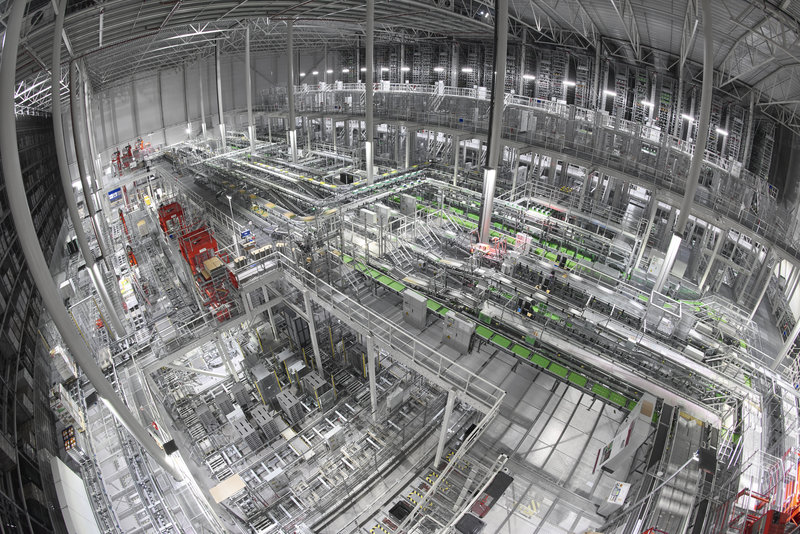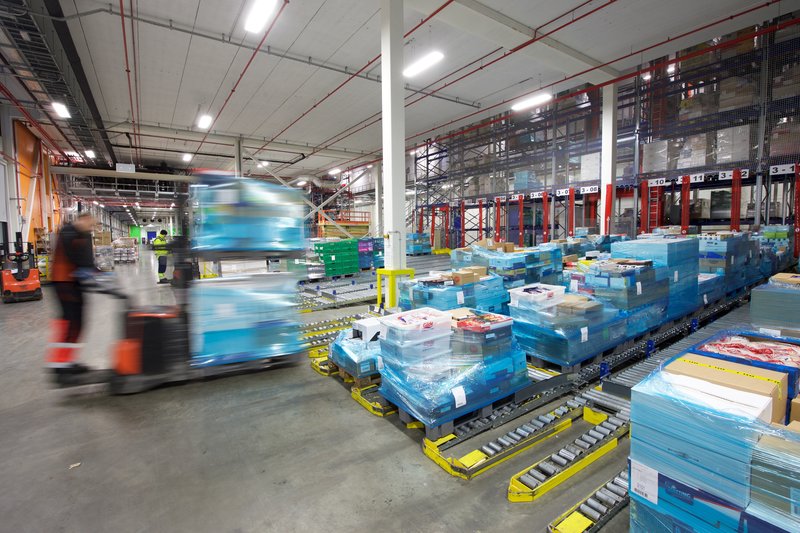WITRON’s solution: The Omni Channel Machinery (OCM)
For Prof. Dr. Alexander Hübner from the Technical University Munich, things are quite obvious: “Omni-channel is a must-have in retail business. If you want to survive as a retailer, you have to be present on all channels.“ Hübner knows his way around, his research focus is on the design of sustainable supply chains. In the past, the topic of omni-channel was mainly a source of concern for traditional retailers. But the e-commerce platforms shook up an entire industry sector. „Today, many small retailers also have their own web platforms to serve their customers." Hübner sees a concentration of logistics centers when it comes to consumer goods or fashion.
And the challenge for food retail? “The demands companies have on logistics are increasing. Store business is running in cases and home shopping in units. In addition, there are click & collect, drives, pick-up points, etc. The logistics researchers is convinced that the challenge for the coming years will be to map all of it cost-efficiently, flexibly, and sustainably with automation. Hybrid scenarios are therefore gaining importance in this industry sector.“ WITRON recognized the development at an early stage. The WITRON answer to this is OCM - Omni Channel Machinery. On this page, we will explain what OCM means for us and you as a customer.
OCM stands for the integration of all horizontal and vertical players in an omni-channel network: Suppliers, logistics centers, transportation, as well as the different distribution channels such as stores, home delivery, click & collect, and drives. The aim is to create a platform, an efficient end-to-end retail logistics network where all nodes communicate with each other constantly and at the same time optimize each other.

The integration of OCM starts with a targeted benefit analysis. What is already available in the existing logistics network of the WITRON customer? The next step is to determine what is still missing. And finally, it’s about merging all of that to an efficient omni-channel network and optimizing this network with the goal to supply the goods to the consumer in a cost-efficient, economic, and sustainable manner - regardless of the distribution channel - stationary or digital. Consequently, OCM is an integrated retail platform. It includes a high-performance omni-channel logistics center, interfaces to all horizontal and vertical players, and, in addition, an optimizer that makes it possible to easily and efficiently manage the generated network according to different priorities - by time, costs, performance, transport, or volume.

In a high-performance omni-channel logistics center, for example, there is no need for separate inbound, inventory management, product master data, technologies, service processes, or manpower for the different distribution channels. The goal is to simplify complexity, not build parallel worlds, leverage the strengths and volumes from the successful store business to economically integrate the increasing online business, and thus respond with high flexibility to a changing channel dynamics. WITRON does not want to develop a new route scheduling system or a new order management software, and certainly not act as a service provider between the retailers and their customers. We combine existing technology, develop a platform from the supplier, over the warehouse, through to the store or end customer, create transparency within the retail network, and enable data exchange between all participants.

“WITRON is realizing our dream of an omni-channel warehouse.”
The logistics center will supply both Axfood stores and online customers with more than 22,000 different items. The temperature zones range from +25 degrees Celsius to minus 26 degrees Celsius. The system is designed for a daily pick capacity of approx. 1.6 million pick units. The online business accesses the same inventory as the store business. Processes that would have to be handled in two separate sections of a conventional warehouse and then consolidated extensively, are covered by the system in only one integrated warehouse logistics system. The result: significant efficiency, performance, and quality increases of the picking and packing processes as well as considerable investment savings.
![Nicholas Pettersson from Axfood [Translate to Englisch:] Nicholas Pettersson from Axfood](/fileadmin/_processed_/d/0/csm_1WITRON_OCM_Nicholas_Pettersson_Axfood_d5f1ab44aa.jpg)